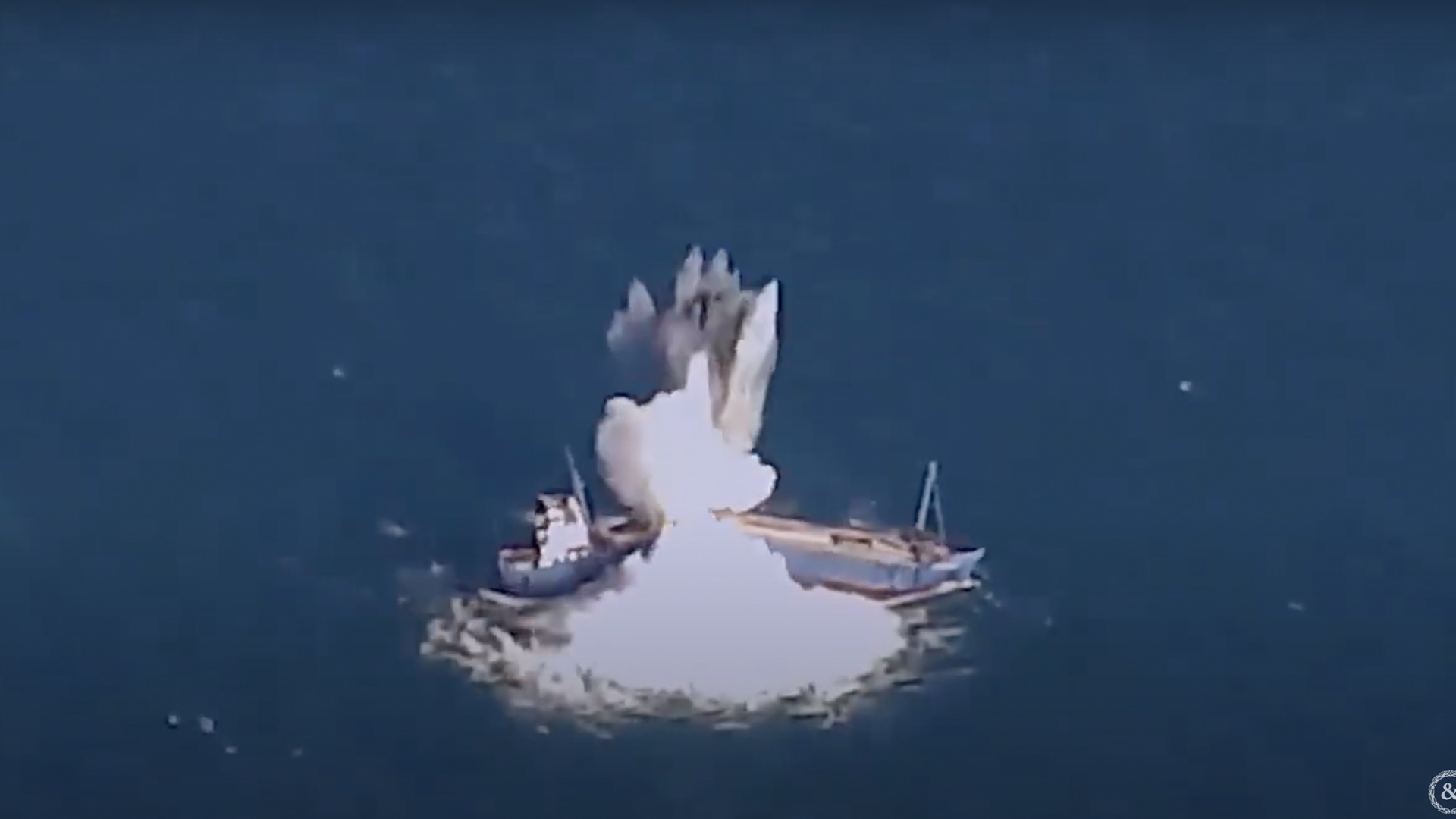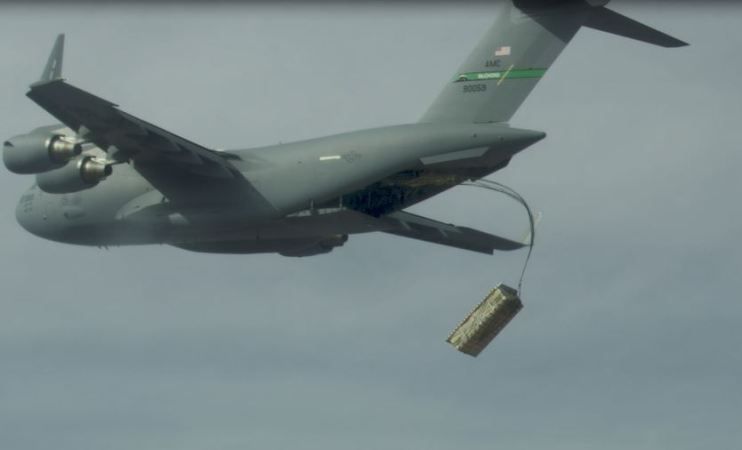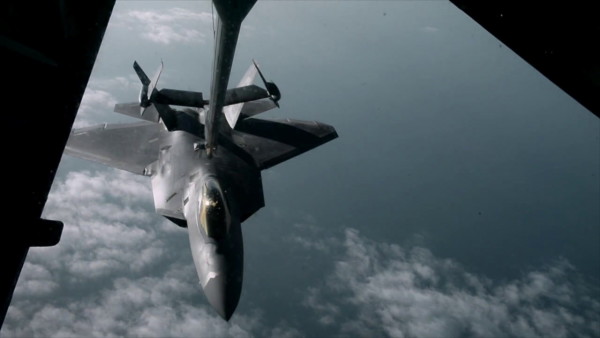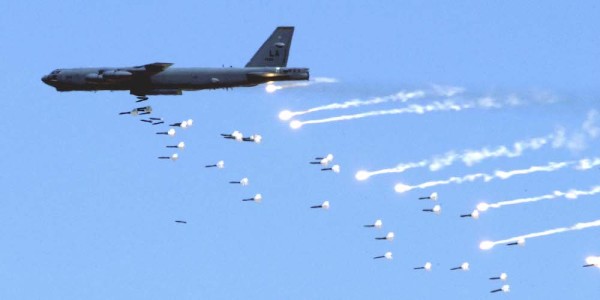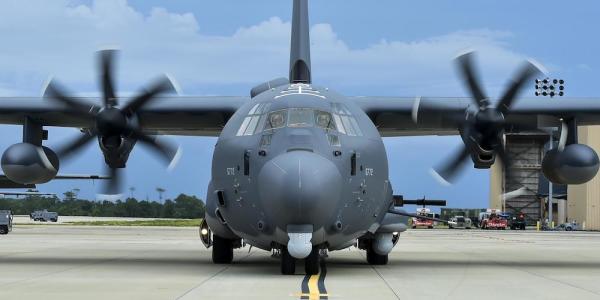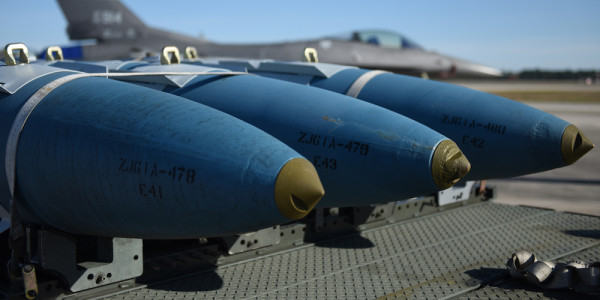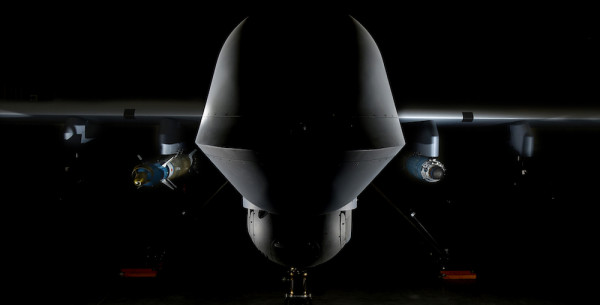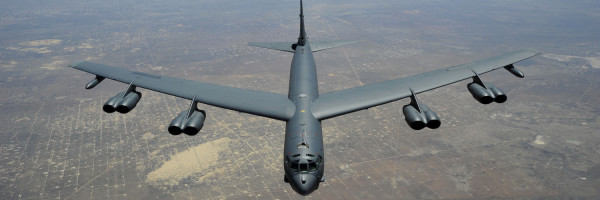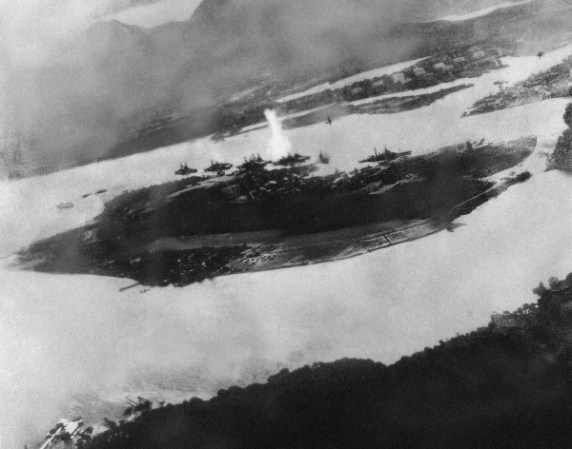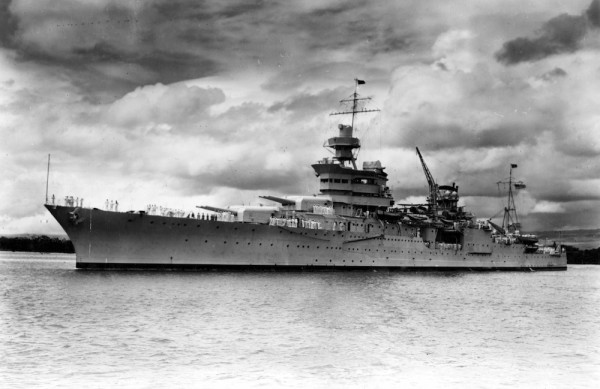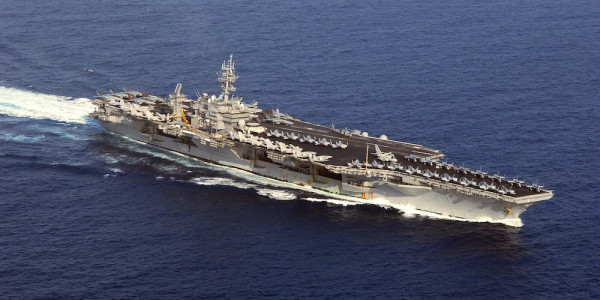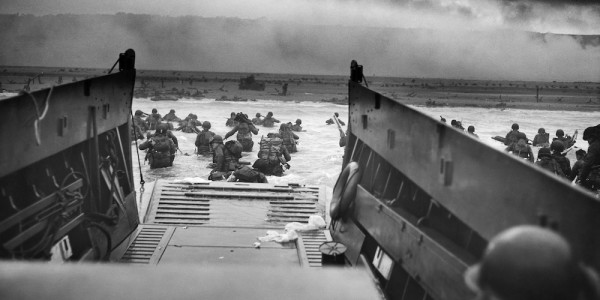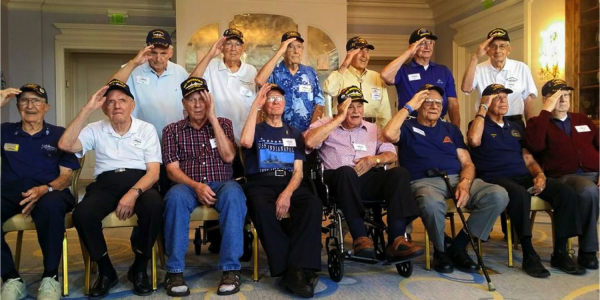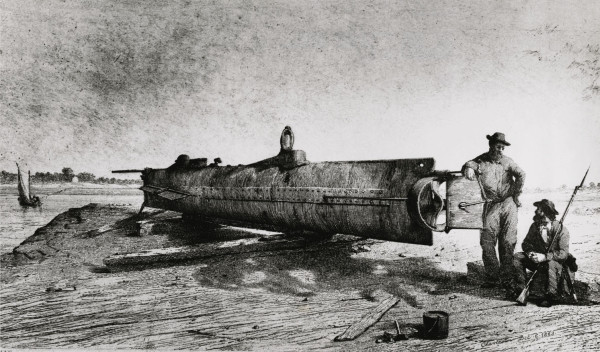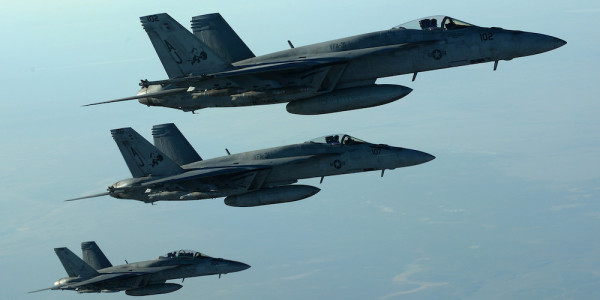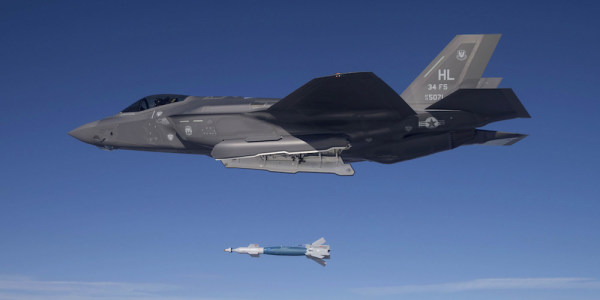As Tony Stark said, the best weapon isn’t the one you never have to use, it’s the one you only have to use once. Like a single bomb that can split a ship in half and send it to the bottom of the ocean.
Or, to be more specific, a 2,000 pound Joint Direct Attack Munition, or JDAM, dropped from something like an F-15E Strike Eagle. That will get the job done.

This footage, taken in April and released this week, shows the Courageous, a simple cargo vessel floating in the ocean. Once the JDAM hits, you can see the Courageous lift out of the water and literally split in half, amidst a massive plume of water. As all that water settles? Well, the ship is basically already underwater, as a camera placed aboard the Courageous shows.
This particular munition, tested by the Air Force Research Laboratory, is, appropriately enough, dubbed Quicksink. Because it does, indeed, sink ships quickly.
As the Air Force Research Lab says, the Quicksink “aims to develop a low-cost method of achieving torpedo-like seaworthy kills from the air at a much higher pace and over a much larger area than covered by a lumbering submarine.”
Attacking ships from the air is nothing new. More than 100 years ago, Brig. Gen. Billy Mitchell conducted the first test to demonstrate what might now seem like the pretty simple concept of dropping bombs on ships.
This might seem like a pretty obvious idea, but it was also only 18 years since planes took flight, so there was some resistance.
As Adm. William Benson, Chief of Naval Operations said at the time, “I cannot conceive of any use that the fleet will ever have for aircraft,” adding that “the Navy doesn’t need airplanes. Aviation is just a lot of noise.”
Nevertheless, Mitchell’s planes sank an ancient battleship, the USS Indiana. A year later, they went after a collection of decommissioned U.S. ships and others acquired from Germany in the aftermath of World War I. And they sank them.
At the time, without the benefit of precision guided munitions, the goal was actually to miss the target and use the shockwave effect to collapse the ship’s hull, but the precedent was set.
Sinking ships with planes wasn’t that simple, though. After all, the plane is moving, the ship is moving, the bombs are flying through the air, there is a lot of physics involved. So there were torpedo bombers, dive bombers, and many largely unsuccessful attempts to just drop bombs on a fleet of ships. One of the early heroes of World War II, Colin Kelly, was awarded the Distinguished Flying Cross for just such a mission, dropping bombs in a fleet of Japanese warships near the Philippines.
Since then, the business of sinking ships has shifted missiles and submarines.
Those cost money, though. And this JDAM? Relatively cheap. And a single one of them can, you know, quickly split a ship into two pieces, which does nothing for its seaworthiness.
Planes sinking ships? Consider it a return to tradition.
The latest on Task & Purpose
- ‘Untethered’ Air Force general: ‘When you kill your enemy, every part of your life is better’
- The Air Force’s top recruiter is personally reviewing recruits’ hand tattoos so they can enlist
- Political candidate accused of stolen valor claims his deployments are ‘classified’
- Tank warfare is still relevant, even if the Russians suck at it
- The best military field gear we’ve ever bought
Want to write for Task & Purpose? Click here. Or check out the latest stories on our homepage.

